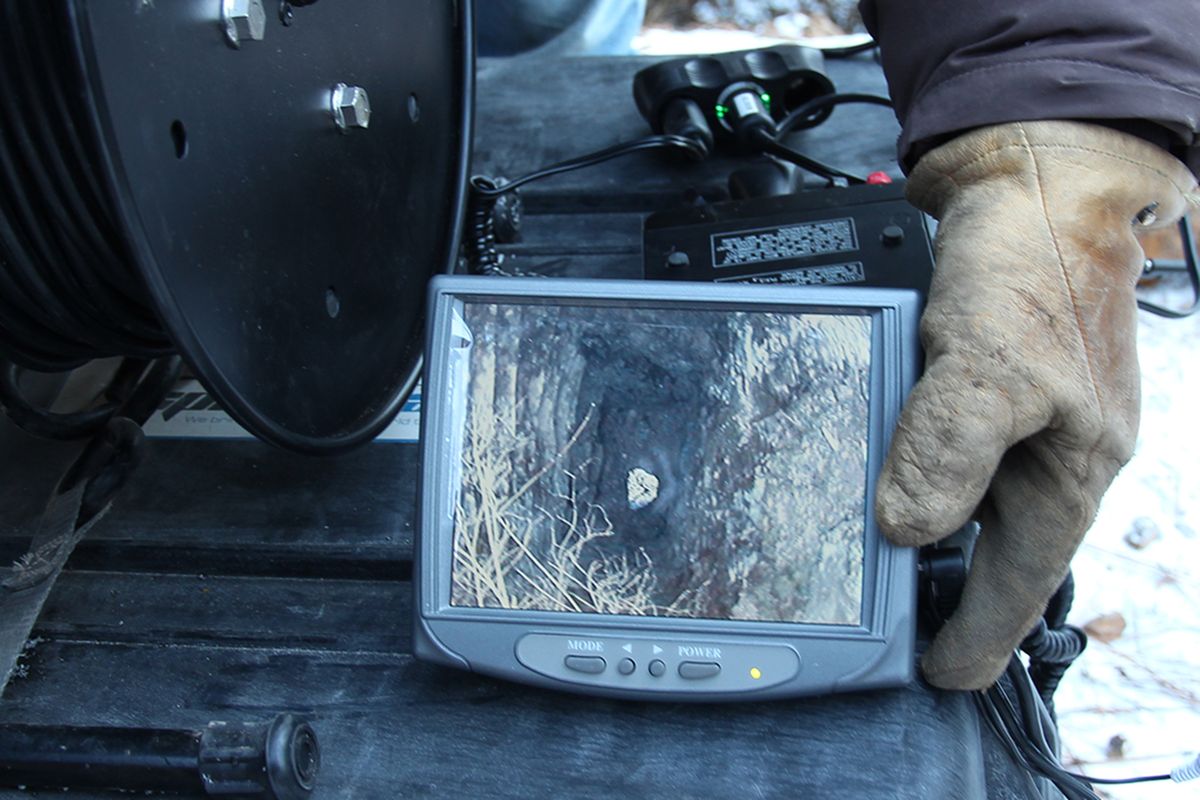Team uses video camera to explore Evolution Mine shaft

Mine closure experts, working in 5-degree weather, lowered a video camera into an open, abandoned mine shaft in North Idaho over the weekend, but the results were inconclusive and its exact depth may remain a mystery forever.
Initially, experts with the U.S. Bureau of Land Management and the Idaho Department of Lands thought the camera may have been at the bottom when its descent was stopped at the 50-foot depth, but they now say it likely encountered a false bottom, possibly made of timbers and covered by ice, water and debris.
A historical document provided to the federal and state mine experts on Monday suggests the Evolution shaft was more than 350 feet deep in the 1920s when a Spokane-based company was promoting a $1 million stock offering to drive the shaft deeper.
“There has been a continued improvement in both the quantity and the quality of the ore as the sinking of the (Evolution) shaft has progressed, which is now down to the 350-foot level,” said the company’s prospectus that accompanied a June 1927 map. The mine owners hoped to push the shaft downward to the 1,000- or 1,500-foot level, the prospectus said.
The mine shaft’s exact depth and what may lie beyond the false bottom apparently won’t ever be known. The Idaho Department of Lands does not plan to repeat the video inspection done in cooperation with the BLM, agency spokeswoman Emily Callilhan said Monday.
The state, which administers a mine closure fund, will develop bid specifications for a bat-friendly permanent cap over the 140-square foot opening that’s the former main shaft of the Evolution Mine. It is believed to be the first operating mine site in Idaho and hasn’t been in operation for more than 60 years.
The mine site is on a publicly accessible hillside about 60 feet above Interstate 90. The video inspection came after a report in September detailed public safety issues associated with the open mine shaft.
On Saturday, metal rigging and a pulley system were moved into position over the shaft opening, and a BLM video camera was lowered while team members watched live shots on a monitor.
At approximately 50 feet from the surface, near where an adit or partially collapsed mine tunnel intersects the shaft, the video camera encountered a blockage. The camera appeared to show iron tracks that may have been used for ore cars to haul ore out of the tunnel.
After the camera was removed, BLM mine closure team leader Phil Barbarick said a couple of large rocks were dropped down the shaft. “It was an echoing sound, likely not the bottom of the shaft,” he said. “It sounded to me like it was a false floor,” a wooden landing that may have been erected where the tunnel intersected for removal of ore cars.